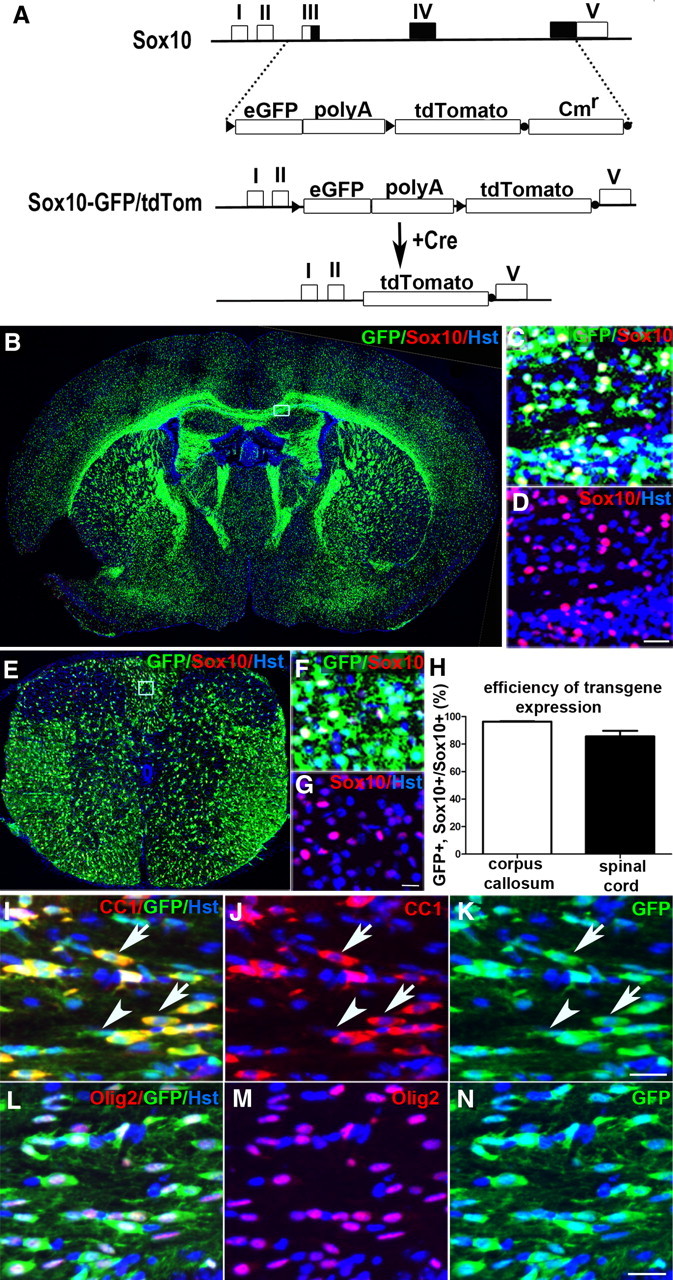Figure 1.

Generation and characterization of Sox10-GFP/tdTom dual reporter mice. A, The genomic region on the Sox10 genomic PAC between exons 3 and 5 was replaced with loxP-eGFP-(polyA)4-loxP-tdTom-frt-CmR-frt. The chloramphenicol resistance cassette (CmR) was removed with Flp-recombinase (Lee et al., 2001). In the absence of Cre recombinase, only GFP is expressed since the (polyA)4 cassette effectively directs cleavage of the primary RNA transcript upstream of tdTom. In the presence of Cre, eGFP-(polyA)4 is excised and tdTom expressed instead. As expected, in the absence of Cre, expression of GFP (green) was noted in a majority of SOX10+ cells (red) in the forebrain (B–D) and spinal cord (E–G). Boxed areas in B and E are shown at higher magnification in C, D, and F, G, respectively. Cell counts at P10–P13 (H) revealed that ∼96% (n = 3 mice) of SOX10+ cells in the corpus callosum and ∼86% (n = 4 mice) of SOX10+ cells in the spinal cord white matter were GFP+ (data shown as mean ± SEM). The vast majority of GFP+ cells (green) was confirmed to be OL lineage by double immunolabeling spinal cord white matter for CC-1, which labels differentiated OLs (red, I–K), or anti-OLIG2, which labels all stages of the lineage (red, L–N). Arrows in I–K indicate GFP+ OLs that colabel with CC-1; arrowheads indicate GFP+, CC-1-negative OLPs. tdTom was not expressed in the absence of Cre (not shown). Cell nuclei were poststained with Hoechst 33258 (Hst, blue). The images in I–N were taken in the corpus callosum at P12. Scale bars: D, G, 20 μm; K, N, 25 μm.
